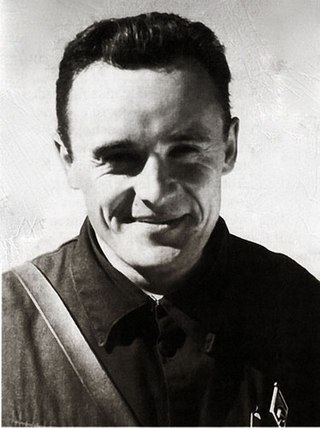
Sergei Pavlovich Korolev was the lead Soviet rocket engineer and spacecraft designer during the Space Race between the United States and the Soviet Union in the 1950s and 1960s. He invented the R-7 Rocket, Sputnik 1, and was involved in the launching of Laika, Sputnik 3, the first human-made object to make contact with another celestial body, Belka and Strelka, the first human being, Yuri Gagarin, into space, Voskhod 1, and the first person, Alexei Leonov, to conduct a spacewalk.

Soyuz is a family of expendable Russian and Soviet carrier rockets developed by OKB-1 and manufactured by Progress Rocket Space Centre in Samara, Russia. The Soyuz is the rocket with the most launches in the history of spaceflight.

S.P. Korolev Rocket and Space Corporation "Energia" is a Russian manufacturer of spacecraft and space station components. Its name is derived from the Russian word for energy and is also named for Sergei Pavlovich Korolev, the first chief of its design bureau and the driving force behind early Soviet accomplishments in space exploration.

The R-7 Semyorka, officially the GRAU index 8K71, was a Soviet missile developed during the Cold War, and the world's first intercontinental ballistic missile. The R-7 made 28 launches between 1957 and 1961. A derivative, the R-7A, was operational from 1960 to 1968. To the West it was unknown until its launch. In modified form, it launched Sputnik 1, the first artificial satellite, into orbit, and became the basis for the R-7 family which includes Sputnik, Luna, Molniya, Vostok, and Voskhod space launchers, as well as later Soyuz variants. Various modifications are still in use and it has become the world's most reliable space launcher.

The Vostok programme was a Soviet human spaceflight project to put the first Soviet cosmonauts into low Earth orbit and return them safely. Competing with the United States Project Mercury, it succeeded in placing the first human into space, Yuri Gagarin, in a single orbit in Vostok 1 on April 12, 1961. The Vostok capsule was developed from the Zenit spy satellite project, and its launch vehicle was adapted from the existing R-7 Semyorka intercontinental ballistic missile (ICBM) design. The name "Vostok" was treated as classified information until Gagarin's flight was first publicly disclosed to the world press.

Vostok was a family of rockets derived from the Soviet R-7 Semyorka ICBM and was designed for the human spaceflight programme. This family of rockets launched the first artificial satellite and the first crewed spacecraft (Vostok) in human history. It was a subset of the R-7 family of rockets.
The Voskhod rocket was a derivative of the Soviet R-7 ICBM designed for the human spaceflight programme but later used for launching Zenit reconnaissance satellites. It was similar to the Molniya 8K78M but had the less powerful 8D75 engines and the RD-0107 used in the earlier 8K78 rather than the improved RD-0110 engine. In 1966, all R-7 variants were standardized around the 11A511 cores, which featured the 8D75M engines on the first stage and the RD-0110 in the Blok I, however Voskhod boosters continued using the older RD-0107 outside the boosters used for Voskhod 1 and 2, which had a man-rated version known as RD-0108.
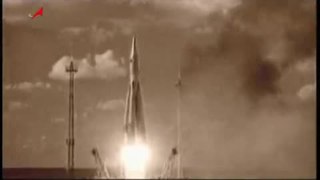
The Soviet space program was the state space program of the Soviet Union, active from 1955 until the dissolution of the Soviet Union in 1991. Contrary to its American, European, and Chinese competitors, which had their programs run under single coordinating agencies, the Soviet space program was divided between several internally competing design bureaus led by Korolev, Kerimov, Keldysh, Yangel, Glushko, Chelomey, Makeyev, Chertok and Reshetnev. Several of these bureaus were subordinated to the Ministry of General Machine-Building. The Soviet space program served as an important marker of claims by the Soviet Union to its superpower status.

The Molniya-M, GRAU designation 8K78M, was a Soviet Union launch vehicle derived from the R-7 Semyorka Intercontinental ballistic missile (ICBM).
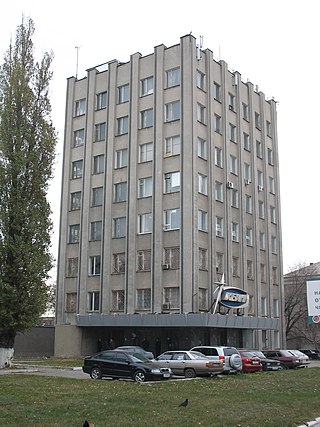
Chemical Automatics Design Bureau (CADB), also KB Khimavtomatika, is a Russian design bureau founded by the NKAP in 1941 and led by Semyon Kosberg until his death in 1965. Its origin dates back to a 1940 Moscow carburetor factory, evacuated to Berdsk in 1941, and then relocated to Voronezh city in 1945, where it now operates. Originally designated OKB-296 and tasked to develop fuel equipment for aviation engines, it was redesignated OKB-154 in 1946.

Mikhail Klavdievich Tikhonravov was a Soviet engineer who was a pioneer of spacecraft design and rocketry.
The Vostok-L, GRAU index 8K72 was a rocket used by the Soviet Union to conduct several early tests of the Vostok spacecraft.
The Vostok-K, GRAU index 8K72K was an expendable carrier rocket used by the Soviet Union for thirteen launches between 1960 and 1964, six of which were crewed. It was derived from the earlier Vostok-L; however, it featured uprated engines to improve performance, and enlarge its payload capacity. It was a member of the Vostok family of rockets.

The Soyuz was a Soviet expendable carrier rocket designed in the 1960s by OKB-1 and manufactured by State Aviation Plant No. 1 in Kuybyshev, Soviet Union. It was commissioned to launch Soyuz spacecraft as part of the Soviet human spaceflight program, first with 8 uncrewed test flights, followed by the first 19 crewed launches. The original Soyuz also propelled four test flights of the improved Soyuz 7K-T capsule between 1972 and 1974. In total it flew 30 successful missions over 10 years and suffered two failures.

The RD-0110 is a rocket engine burning liquid oxygen and kerosene in a gas generator combustion cycle. It has four fixed nozzles and the output of the gas generator is directed to four secondary vernier nozzles to supply vector control of the stage. It has an extensive flight history with its initial versions having flown more than 57 years ago.
The RD-0214 (GRAU Index: 8D811) is a rocket vernier engine burning N2O4 and UDMH in a gas generator cycle. It has four nozzles that can each gimbal 45 in plane to provide TVC to the RD-0212 propulsion module of Proton third stage. It is a revised version of the RD-0207.
Voronezh Mechanical Plant is a Russian engine and heavy machinery manufacturing plant. It is located in the city of Voronezh, in the Voronezh Oblast.
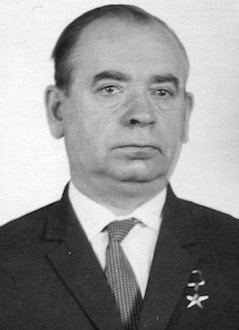
Leonid Alexandrovich Voskresensky was a Soviet engineer in the Soviet space program, and long-time associate of Chief Designer Sergei Korolev. He served as launch director for Sputnik and for the first crewed space flight, Vostok 1. The lunar crater Voskresenskiy is named in his honor.
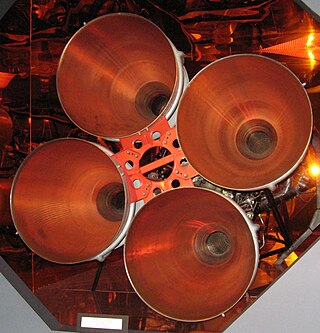
Soviet rocketry commenced in 1921 with development of Solid-fuel rockets, which resulted in the development of the Katyusha rocket launcher. Rocket scientists and engineers, particularly Valentin Glushko and Sergei Korolev, contributed to the development of Liquid-fuel rockets, which were first used for fighter aircraft. Developments continued in the late 1940s and 1950s with a variety of ballistic missiles and ICBMs, and later for space exploration which resulted in the launch of Sputnik 1 in 1957, the first artificial Earth satellite ever launched.
Anatoliy Davidovich Daron was a Russian rocket engineer and scientist, who created the engines for the rockets that delivered the first satellite and the first Soviet cosmonaut, Yuri Gagarin, into space.















